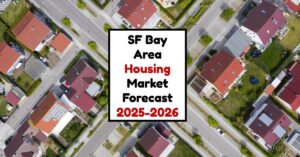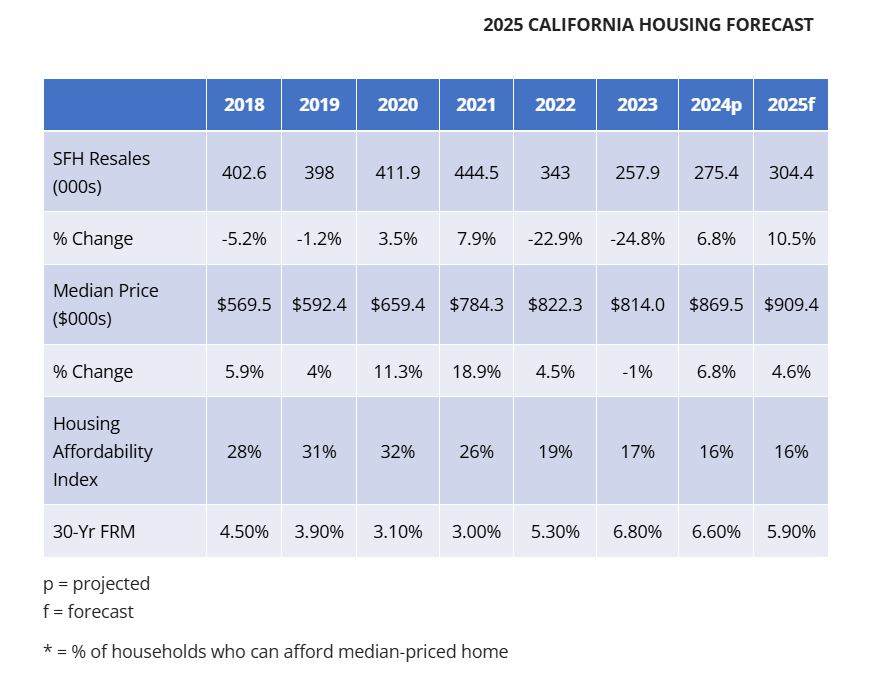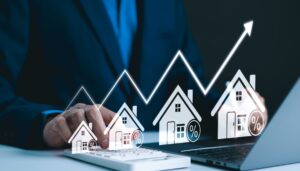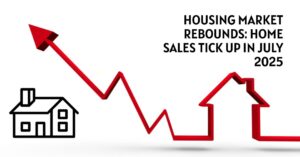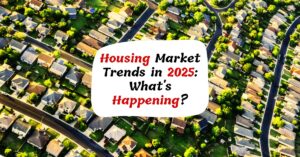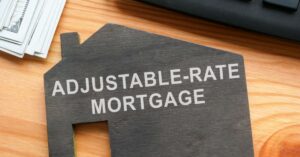Thinking about buying or selling a home in Los Angeles? The current Los Angeles housing market is experiencing a bit of a shift. While sales are a bit slower than last year, and prices have seen a slight dip in some areas, there are signs that the market could pick up as we move forward. It’s a situation where being informed is key, and I'm here to walk you through what the numbers are telling us, based on the latest reports.
Current Los Angeles Housing Market Trends in 2025:
Home Sales
Let's start with how many homes are actually changing hands. Across California, and specifically in the Los Angeles Metro Area, home sales in July were down compared to the same time last year. According to the CALIFORNIA ASSOCIATION OF REALTORS® (C.A.R.), in California, existing single-family home sales were down 4.1 percent from July 2024.
For the Los Angeles housing market (Metro Area), the sales figure dipped by 1.0 percent compared to last year. This means that fewer homes are being sold now than they were a year ago. This trend has been going on for a few months now, making July the fourth month in a row where sales have been lower than the previous year.
It’s also worth noting that across the entire state, year-to-date home sales are down by 0.4 percent. This indicates a general slowdown in the market compared to the beginning of the year.
Home Prices
When it comes to home prices, the picture is a little more complex. Statewide, the median home price in July was $884,050. This is a small drop of 0.3 percent compared to July of last year. For the Los Angeles Metro Area, the median home price was $845,500, which is also down by 0.4 percent compared to last July.
This means that, on average, homes are selling for slightly less than they were a year ago. It's not a dramatic drop, but it's definitely a change from the steady increases we've seen in previous years.
Are Home Prices Dropping in Los Angeles?
So, are prices actually dropping? Yes, but it's important to understand what that means. The data shows a slight decrease in the median home price compared to last year, and even month-over-month. For example, California’s median home price declined for the third consecutive month, reaching a five-month low.
This cooling in prices is likely due to a few factors, including higher mortgage rates which we'll talk about more later, and a general sense of economic uncertainty that might be making some buyers a bit more cautious. However, as one expert mentioned, even with these recent dips, California’s median home price could still see a modest annual increase for the year if the market stabilizes. So, while prices aren't soaring like they might have been, they aren't in freefall either.
Housing Supply
What about the number of homes available for sale? This is where things get interesting. The unsold inventory index, which tells us how long it would take to sell all the homes currently on the market at the current sales pace, has actually gone up. In July, the statewide unsold inventory index was 3.7 months, up from 2.9 months in July 2024.
This means there are more homes sitting on the market for longer. In fact, total active listings were up a significant 37.7 percent from a year ago, reaching a 69-month high. This increase in supply is a key reason why we're seeing prices level off or slightly decrease. More homes available means buyers have more choices and aren't in as much of a rush to make offers, which can lead to less bidding wars and more negotiation power for buyers.
For the Los Angeles Metro Area specifically, the unsold inventory index was 3.9 months in July, up from 3.0 months in July 2024. This also indicates an increase in the number of homes available for buyers.
Is Los Angeles a Buyer's Housing Market in 2025?
Given the trends we've seen – slower sales, slightly softening prices, and increased inventory – it's leaning more towards a buyer's housing market right now, especially when compared to the frenzy of a few years ago.
In a seller's market, homes tend to sell very quickly, often with multiple offers above the asking price. In July, the statewide sales-price-to-list-price ratio was 98.5 percent, meaning homes were generally selling for just below the asking price. This is down from 100 percent in July 2024. It also took longer to sell a home, with the median time on market increasing to 28 days, up from 20 days in July 2024. For the Los Angeles Metro Area, the median time on market was 30 days, up from 22 days last year.
These numbers suggest that buyers have a bit more breathing room. They have more options, more time to consider their decisions, and more negotiation power than they did in recent years. However, it’s not a drastically buyer-dominated market, as prices haven’t plummeted, and some areas are still quite competitive.
Market Trends
The overall market trends point to a more balanced, though slower, real estate environment.
Here’s a quick look at some key trends:
- Slower Sales: Fewer homes are selling compared to last year, both statewide and in the Los Angeles area.
- Price Stabilization: While not seeing huge drops, prices have mostly leveled off or seen slight decreases year-over-year.
- Increased Inventory: More homes are available on the market, giving buyers more choices.
- Longer Selling Times: Homes are taking longer to sell, indicating a less intense market.
- Buyer Negotiation Power: Buyers have more room to negotiate on price and terms.
Impact of High Mortgage Rates
A significant factor influencing these trends is the impact of high mortgage rates. As of August 21, 2025, the average 30-year fixed mortgage rate is around 6.58%, and the 15-year fixed-rate mortgage is about 5.69%. While rates have come down a bit over the summer and purchase applications are increasing, many potential buyers are still waiting on the sidelines, hoping for even lower rates before committing to a purchase.
These higher rates make monthly mortgage payments more expensive, which can impact what buyers can afford and, consequently, demand in the market. Forecasts suggest that 30-year fixed-rate mortgages might end 2025 between 6.0% and 6.5%. If rates do continue to moderate, it could bring more buyers back into the market.
Los Angeles County and Metro Area Snapshot
Let's look at some specific numbers for Los Angeles County and the wider Metro Area:
| Region | July 2025 Median Sold Price | July 2024 Median Sold Price | Price Change (YOY) | July 2025 Sales | July 2024 Sales | Sales Change (YOY) | Median Days on Market (July 2025) |
|---|---|---|---|---|---|---|---|
| California | $884,050 | $886,420 | -0.3% | 261,820 | 272,990 | -4.1% | 28 |
| Los Angeles Metro Area | $845,500 | $849,000 | -0.4% | N/A | N/A | -1.0% | 30 |
| Los Angeles County | $911,360 | $909,010 | +0.3% | N/A | N/A | +1.0% | 27 |
Note: “N/A” for sales figures means the specific county-level sales numbers weren't provided in the same annualized format as the state and metro area. The “Sales YOY % Chg” for the Los Angeles Metro Area is provided directly in the source data.
What's interesting here is that while the Los Angeles Metro Area as a whole saw a slight dip in median price and sales compared to last year, Los Angeles County specifically saw a small increase in median price (+0.3%) and sales (+1.0%) year-over-year. This tells us that the overall trends can hide variations within specific neighborhoods or even within the county itself.
The median number of days it took to sell a home in Los Angeles County in July 2025 was 27 days, a bit longer than the 19 days it took in July 2024. This aligns with the broader trend of homes taking longer to sell.
The Takeaway
The current Los Angeles housing market is in a period of adjustment. With mortgage rates influencing affordability and increased inventory giving buyers more options, the market is shifting away from the intense seller's advantage of recent years. It's becoming a more balanced market where buyers have a bit more power, and sellers need to be realistic about pricing and presentation.
Los Angeles Housing Market Forecast: Will Prices Rise or Fall?
You're probably wondering what's going to happen with prices. The Los Angeles housing market forecast suggests a slight decrease over the next year. While the national real estate market may pick up, Los Angeles specifically will likely see some downward pressure on home values. Let's dig into the details and see what factors are shaping the future of housing in LA.
Currently, the average home value in the Los Angeles-Long Beach-Anaheim area is $972,837. That's up about 1.1% from last year, which isn't a huge jump. Homes are going pending pretty quickly, in about 20 days. But, is this trend expected to continue?
According to Zillow's latest projections, here's what they see happening in the Los Angeles housing market over the next year:
| Timeframe | Predicted Home Value Change |
|---|---|
| July 2025 | -0.4% |
| September 2025 | -0.9% |
| June 2025 to June 2026 | -1.3% |
Basically, Zillow anticipates a gradual cooling off. While it's not a crash, they believe values will edge down a bit.
How Does L.A. Compare To Other California Markets?
Okay, Los Angeles might see a slight dip. But what about other parts of California? Here's a quick look at how the forecast compares to other major metro areas using the same forecast data:
| Region | Predicted Home Value Change (June 2025 – June 2026) |
|---|---|
| San Francisco, CA | -6.1% |
| San Diego, CA | -1.5% |
| Riverside, CA | -0.9% |
| Sacramento, CA | -3.7% |
| San Jose, CA | -4.0% |
| Fresno, CA | -1.2% |
| Bakersfield, CA | -0.1% |
| Los Angeles, CA | -1.3% |
As you can see, Los Angeles' forecasted decline is less than some other California cities, but still a bit downward.
What About the National Picture?
While the Los Angeles housing market faces a slight correction, the national outlook, according to the National Association of Realtors (NAR), is more positive. Their Chief Economist, Lawrence Yun, thinks “brighter days may be on the horizon.” Here's what he's predicting:
- Existing home sales are expected to rise by 6% in 2025 and 11% in 2026.
- New home sales are projected to climb by 10% in 2025 and another 5% in 2026.
- Median home prices are forecasted to continue increasing modestly, with a rise of 3% in 2025 and 4% in 2026.
- Mortgage rates are anticipated to average 6.4% in the second half of 2025 and dip further to 6.1% in 2026.
He considers lower mortgage rates the “magic bullet” for boosting the market.
Will Home Prices Crash in Los Angeles?
Based on these forecasts, a crash seems unlikely. While there seems to be a real estate market slowdown and a price correction, a significant crash seems unlikely. The Los Angeles market is still competitive, and demand remains relatively strong. A slight dip in prices could even be a good thing, making homes more affordable for potential buyers.
Looking Ahead to 2026
Predicting beyond a year is always tricky, but if the NAR's predictions hold true, the Los Angeles housing market could see a slight recovery in 2026. With potentially lower mortgage rates and a growing national market, LA could mirror this trend, evening out back around where it is now. However, local economic conditions and housing supply will play a significant role. It's best to keep an eye on the data and consult with a real estate professional for the most up-to-date advice.
Should You Invest in the Los Angeles Real Estate Market in 2025?
Los Angeles has historically been a sought-after real estate market due to its desirable location, diverse economy, and strong demand for housing. Here are some key points to consider:
Market Stability
Los Angeles has a relatively stable real estate market with a history of consistent, long-term appreciation in property values. This stability is driven by factors such as the city's status as an economic hub, its thriving job market, and the limited supply of land for new construction. However, it's essential to note that like any market, there can be fluctuations, and past performance is not indicative of future results.
Property Appreciation
Over the long term, Los Angeles properties have typically appreciated in value. While there can be short-term fluctuations, investing with a long-term perspective can allow you to benefit from the city's overall property value growth.
Rental Income Potential
Los Angeles has a strong rental market, with a high demand for both single-family and multi-family rentals. This presents an opportunity for investors to generate rental income. However, rental income potential can vary depending on the neighborhood and property type.
Consideration for Property Type
Investors in Los Angeles can choose between single-family and multi-family properties. Single-family homes often provide more predictable rental income and potential for appreciation, while multi-family properties can offer multiple income streams but come with added management responsibilities.
The Housing Shortage Dilemma
Los Angeles is no stranger to the housing shortage dilemma. As its population continues to grow, driven by a robust job market and desirable lifestyle, the housing market struggles to keep pace. The consequences are multifold, affecting both renters and potential homeowners. High demand has led to escalating rental costs and home prices, making housing less affordable for many.
Investor's Paradise: The Demand-Supply Gap
For real estate investors, this gap between demand and supply represents a significant opportunity. The housing shortage has created a strong demand for rental properties, offering the potential for attractive rental income and return on investment. Here's why Los Angeles is an investor's paradise:
- Rental Income: High demand for housing has driven up rental rates, providing investors with the prospect of steady rental income.
- Property Appreciation: Despite the challenges, Los Angeles properties have shown a history of appreciating in value over the long term.
- Population Growth: Los Angeles continues to attract new residents due to its economic opportunities and lifestyle. This demographic growth fuels the demand for housing.
- Construction Gap: Construction in Los Angeles hasn't kept pace with population growth, intensifying the supply-demand imbalance.
Economic Diversity
Los Angeles is renowned for its economic diversity. The region's economy spans various sectors, including entertainment, technology, aerospace, healthcare, and tourism. The presence of major corporations, such as those in the entertainment and tech industries, has been a key driver of job creation and economic growth. The city's thriving tourism industry, centered around attractions like Hollywood and Disneyland, also plays a significant role in generating revenue and job opportunities.
Job Growth
Los Angeles has consistently experienced job growth, making it an attractive destination for job seekers. The city's diverse economic landscape provides opportunities in various fields. It is a hub for creative industries, with Hollywood serving as the epicenter of the global entertainment industry. Additionally, the tech sector has witnessed substantial growth in Silicon Beach, an area on the west side of Los Angeles, home to numerous tech startups and established companies.
The presence of educational institutions, including the University of California, Los Angeles (UCLA) and the California State University, Northridge, contributes to research, development, and a well-educated workforce. The healthcare sector, with renowned institutions like the Cedars-Sinai Medical Center, further drives job opportunities.
Population Growth
The Los Angeles Metropolitan Area's strong economy and job market have attracted a steady influx of residents. The population of the Los Angeles metro area is projected to be 12,598,000 in 2024, which is a 0.51% increase from 2023. However, the population of Los Angeles County is estimated to be 9,606,925 in 2024, which is a 0.58% decrease from the previous year.
The allure of the city's lifestyle, cultural diversity, and range of amenities has made it a magnet for people from various backgrounds. The region's population growth can be attributed to factors such as:
- Job Opportunities: People move to Los Angeles in search of better job prospects and career growth.
- Education: The presence of top-tier universities and educational institutions attracts students and faculty from around the world.
- Cultural Attractions: The city's vibrant cultural scene, including theaters, museums, and art galleries, appeals to those seeking a rich cultural experience.
- Quality of Life: Los Angeles offers a pleasant climate, beautiful landscapes, and recreational opportunities that enhance the quality of life.
- Entertainment Industry: The allure of the entertainment industry draws aspiring actors, musicians, and filmmakers to Los Angeles.
As the population continues to grow, the demand for housing and services surges, creating a dynamic environment for real estate investors.
How to Invest in Real Estate in Los Angeles?
Investing in real estate in Los Angeles involves several steps:
1. Research the Market: Begin by thoroughly researching the Los Angeles real estate market. Analyze historical property values, rental trends, and the performance of different neighborhoods.
2. Financial Preparation: Ensure your financial situation is in order. This may include saving for a down payment, understanding your credit score, and securing financing.
3. Property Selection: Choose the type of property you want to invest in, whether it's a single-family home, multi-family building, or another type. Consider your investment goals and budget.
4. Location Matters: Location is critical in Los Angeles. Research neighborhoods and select areas with potential for growth and strong rental demand.
5. Property Management: Decide whether you'll manage the property yourself or hire a property management company. This choice may depend on the number of units and your experience.
6. Legal and Tax Considerations: Understand the legal and tax implications of real estate investing in Los Angeles. Consult with professionals if needed.
Single-Family Rental vs. Multi-Family Investment
When considering whether to invest in single-family or multi-family properties, it's essential to weigh the pros and cons of each:
Single-Family Rental:
- Typically lower initial investment.
- Easier property management.
- Predictable rental income.
Multi-Family Investment:
- Multiple income streams.
- Potential for higher overall rental income.
- More management responsibilities.
The choice between the two depends on your investment goals, budget, and willingness to manage the property. Both can be viable options in the Los Angeles market.
Maximizing Return on Investment
Investors looking to maximize their return on investment (ROI) in Los Angeles should consider the following strategies:
- Location Selection: Carefully choose neighborhoods with strong rental demand and potential for property appreciation.
- Property Type: Evaluate whether single-family or multi-family properties align with your investment goals and budget.
- Property Management: Efficient property management can enhance ROI by reducing vacancies and maintenance costs.
- Market Timing: Keep an eye on market trends and consider timing your investment to take advantage of favorable conditions.
- Legal and Tax Considerations: Consult with legal and financial experts to ensure you're optimizing your investment from a legal and tax perspective.
Recommended Read:
- Minimum Qualifying Income to Buy a House in Los Angeles is $219,200
- Top 5 Richest Cities in the Los Angeles County
- 20 Wealthy Neighborhoods in Los Angeles
- Average Home Price in Los Angeles
- Unveiled: The Top 5 Richest Cities in Los Angeles County You Need to Know About
- Minimum Qualifying Income to Buy a House in Los Angeles is $219,200

